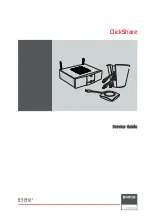
190
Alvium USB Cameras User Guide V3.3.0
Performance and troubleshooting
Optimizing performance
Image transfer with rolling shutter cameras
Alvium 1800 U-500m/c, U-501m NIR, U-1240 m/c, and U-2050m/c
If acquisition is started and stopped in a short sequence, no image is transferred to
the host. The duration cannot be predicted, because it depends on various factors.
Frame rate jitter
Alvium 1800 U-500m/c, U-501m NIR, U-1240 m/c, and U-2050m/c
Generally, some parameters can be changed during exposure without affecting the
timing. When the camera is operated in freerun mode without triggering, changing
parameters during exposure leads to frame rate jitter.
When parameters are entered, the next frame starts only after readout and sensor
reconfiguration delay are finished. When the camera is run in
ExposureAuto
mode, the actual frame rate is less than the calculated value for the corresponding
exposure time. Consider frame rate jitter for your application.
Feature value changes during streaming
Only some features can be adjusted while the camera is streaming, these include:
This list is not complete and will be updated in future document versions.
Figure 80: Delayed exposure due to parameter changes
AcquisitionFrameRate
ExposureAuto
GainAuto
BalanceWhiteAuto
ExposureTime
OffsetX
BlackLevel
Gain
OffsetY
Latencies
Consider that value changes become effective with latencies based on the sensor
and its operation mode (triggered or free run, shutter mode, frame rate).
džƉŽƐƵƌĞĐƟǀĞ
ZĞĂĚŽƵƚĐƟǀĞ
džƉŽƐƵƌĞĐƟǀĞ
New parameters
ZĞĐŽŶĮŐƵƌĂƟŽŶĚĞůĂLJ
ŶƚĞƌŝŶŐŶĞǁƉĂƌĂŵĞƚĞƌƐ͗
ZĞĂĚŽƵƚĐƟǀĞ
















































